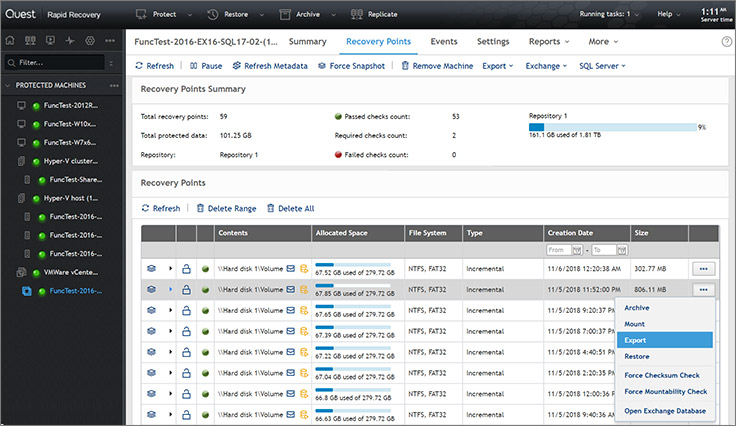
- #Rapid recovery powershell gracyfull shutdown full#
- #Rapid recovery powershell gracyfull shutdown free#
$VMtoStart = Get-VM | where notes -contains 'Boot order 1' The following PowerShell script starts virtual machines in a specific order and runs extra availability checks for some services (TCP ports) in the VM using the PowerShell cmdlet Test-NetConnection: Set-vm lon-rds01,lon-app01 -Notes "Boot order 3" Set-vm lon-exch1, lon-db01 -Notes "Boot order 2" Set-vm lon-dc01,lon-dc02 -Notes "Boot order 1" For example, I have set the following tags for the VMs: To make it more convenient, you can join several VMs into a group using tags. In the script, you can set a delay before starting the next VM and perform additional checks for the availability of an application or service in the VM (to make sure that the app or service has been started). Get-VM –VMname lon-rds01,lon-app01 | Set-VM –AutomaticStartDelay 180Īnother way is to start VMs in turn using a PowerShell startup script. Get-VM –VMname lon-exch1,lon-db01 | Set-VM –AutomaticStartDelay 90 Get-VM –VMname lon-dc01| Set-VM –AutomaticStartDelay 0 In the simplest cases, you can configure the order of VM startup by setting different startup delays for them: Hyper-V doesn’t have any built-in tools to manage startup order of the virtual machines, except for the start delay option ( AutomaticStartDelay). For example, you need the Exchange VM to boot only after the domain controller is available, and an app server to start after a database server. When starting a standalone Hyper-V host, an administrator must manage the startup order of virtual machines on it. Boot (Startup) Order of Hyper-V Virtual Machines Using the – AutomaticStopAction option, you can set the VM shutdown settings ( Save, TurnOff, ShutDown). Get-VM –VMname * | Where-object –FilterScript | Set-VM –AutomaticStartDelay 90


To set up startup delay for all VMs except for one (for example, a domain controller with FSMO roles):
#Rapid recovery powershell gracyfull shutdown free#
You can use PowerShell to configure virtual machine settings on a free Windows Hyper-V Server host that has no GUI. Its possible values are Nothing, StartIfRunning, Start. You can change the automatic startup settings of a VM using the AutomaticStartAction option. Get-VM –VMname * | Select-Object VMname,AutomaticStartAction,AutomaticStartDelay,AutomaticStopAction You can view and change the automatic startup and shutdown settings of your Hyper-V virtual machines using PowerShell.ĭisplay the current startup and shutdown settings of all VMs: All apps running in the VM are stopped and the risk of getting inconsistent data is very low. Shutdown the guest operating system – a guest OS is shutdown using Hyper-V integration service (graceful shutdown).In this mode, there is some risk of getting inconsistent data in the apps running in the VM.
#Rapid recovery powershell gracyfull shutdown full#
The VM state is not saved, a guest OS will be started with a full boot cycle.



 0 kommentar(er)
0 kommentar(er)
